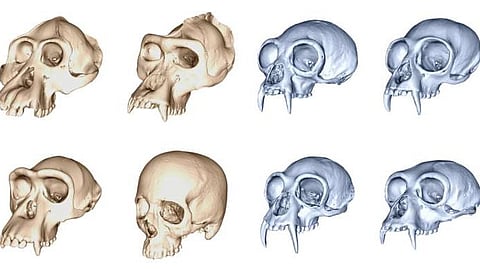

Humans have evolved faster than any other ape, found out researchers at the University College London (UCL). According to them, this likely reflecting the evolutionary advantages of these traits in humans.
The research team created digital 3D models of skulls from seven great ape species, including humans, and nine lesser apes such as gibbons. They compared differences in skull shape, including the size of the braincase and the structure of the face.
Their findings, published in the journal Proceedings of the Royal Society B: Biological Sciences, show that humans’ skulls changed roughly twice as fast as expected when compared to other apes. The biggest differences were found in the upper face and braincase, areas linked to larger brain size and flatter facial structure.
Lead researcher Dr Aida Gómez-Robles said humans stand out for evolving more quickly than any other ape, likely due to the demands of bigger brains and more complex social lives.
In contrast, the skulls of lesser apes, such as gibbons, have changed very little over the past 20 million years, suggesting that humans and other great apes experienced far more dramatic transformations. Among the great apes, gorillas showed the next fastest rate of skull evolution, although their changes were probably driven by physical rather than cognitive traits.
“In their case, it's likely that the changes were driven by social selection, where larger cranial crests on the top of their skulls are associated with higher social status. It's possible that some similar, uniquely human social selection may have occurred in humans as well,” Dr Gómez-Robles said.
The researchers believe that rapid skull evolution in humans may have been influenced not just by biology but also by social and cultural pressures, such as communication, cooperation, and tool use.
